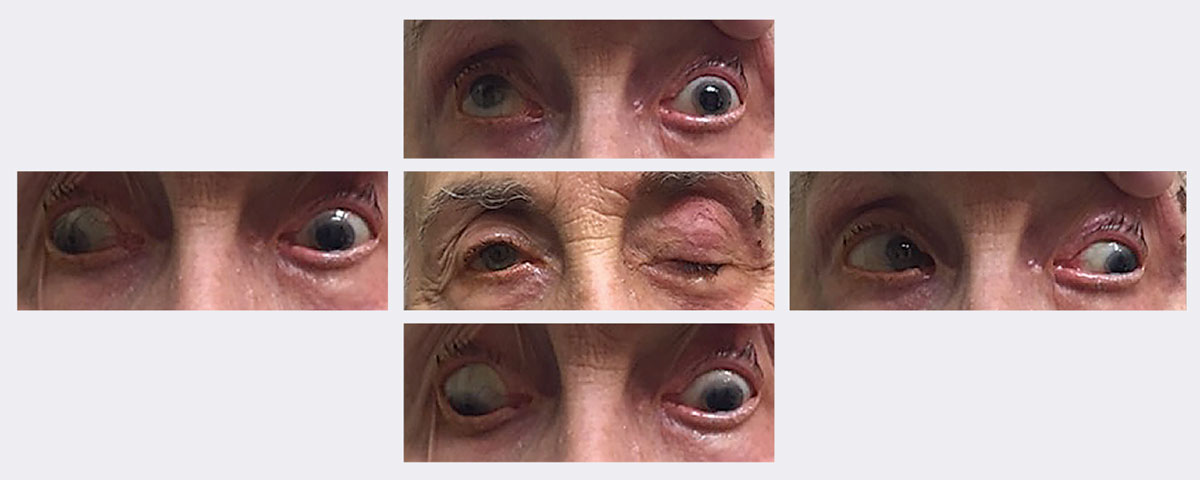 |
|
Patients with third nerve palsy need urgent arterial imaging to evaluate the risk of an aneurysm. Image courtesy of Michael Trottini, OD. Click image to enlarge. |
Isolated third nerve palsy may be a sign of an expanding posterior communicating artery aneurysm, and although this is a rare occurrence, urgent arterial imaging is generally the rule of thumb in these potentially dire cases. Despite this protocol, new research found that while third nerve palsies are typically identified correctly, referring providers often fail to recognize the urgency of arterial imaging to rule out an aneurysm. Specifically, only about 36% of patients under investigation received urgently expedited arterial imaging.
“Concerningly, in some cases, third nerve palsies are correctly identified by a provider and referred to a neuro-ophthalmology clinic for further evaluation and treatment, but without prior arterial imaging performed and without urgency communicated to the consultant,” the authors wrote in their paper.
While awaiting outpatient neuro-ophthalmology evaluation, patients may go weeks or months without receiving this necessary imaging, which can expose them to risk if they actually have a posterior communicating artery aneurysm, the researchers noted.
The study was a retrospective review of 110 charts of patients aged 18 years or older who were seen between 2012 and 2020 at a neuro-ophthalmology clinic and an inpatient ophthalmology consultation service at a tertiary institution. All patients were either referred for suspicion or had a final diagnosis of third nerve palsy. Of the participants, 56% were women and 80% were white, with an average age of 62 years old.
Key study highlights included:
- Forty patients (36.4%) received urgent arterial imaging.
- Individuals suspected of third nerve palsy weren’t more likely to be sent for urgent evaluation or arterial imaging compared with non-suspect palsy patients.
- Seventy-eight of 95 patients (82%) with a final diagnosis of third nerve palsy were correctly identified by referring providers.
- Based on 20 patients who didn’t receive arterial imaging prior to their neuro-ophthalmology visits, the researchers noted a delay of 24 days from symptom onset to imaging, and a further delay of 12.5 days between first medical contact for symptoms and imaging.
- Approximately one quarter of referring providers failed to document at least one cardinal physical examination component, suggesting an incomplete exam.
- One patient was harmed as a result of delayed imaging.
“Raising awareness of the importance of urgent arterial imaging for isolated third nerve palsies may improve patient safety and aid subsequent providers during the diagnostic process, ultimately improving patient care,” the authors wrote in their paper.
Chung JE, Schroeder RM, Wilson B, et al. Failure to obtain urgent arterial imaging in acute third nerve palsies. J Neuroophthalmol. July 29, 2021. [Epub ahead of print]. |

